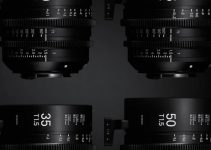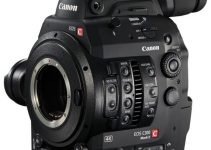Syncing audio and video in post is a common practice and a mandatory step when utilizing a double system for recording dialogue for your production. The workflow in most popular NLEs in these terms hasn’t changed a lot over the years besides one essential exception. Currently, Premiere Pro CC, Final Cut X and DaVinci Resolve 12 all provide an automatic function that let users sync audio and video clips more easily and effortlessly.
In reality, though, many editors complain about the inaccurate results they get when using this method. In the video ahead Curtis Judd explains his personal workflow on putting together audio and video and what are the practices that you need to follow in order to get the best results every time you need to sync up your clips.
Probably the most popular “go-to” solution for syncing audio and video together is making a mark thus creating an in point for your video and audio in the beginning. Generally, you will need to do three claps, especially if you are planning to use the Automatic method in your favorite NLE of choice.
To apply the latter method in FCP-X you need to select both the audio and video clip in the NLE’s Media Manager and by right-clicking on both clips you need to choose Synchronize Clips…. Then in the dialog box that opens up under Synchronization select Automatic. Make sure that Use audio for synchronization is also enabled and click OK.
The FCP-X will do its job by analyzing both clips and a new merged file where both audio and video are synced together will be automatically created. Typically, you will want to disable the reference audio that you’ve recorded in-camera. To do that after selecting the merged clip, navigate to the Inspector and turn off Storyline audio track.
If the Automatic Method doesn’t work you can still sync your clips by utilizing the Manual Method. First, select your audio and place a marker on the exact spot where the first clap occurs. Further, you can use the left and right arrow keys on your keyboard to place the play head more precisely moving it in either left or right frame by frame. When you find the right spot of the first clap simply creates a marker by hitting the M key on your keyboard.
Then do the same thing with the video clip. Keep in mind that you need to select the exact spot where the clap occurs visually. Again, select those two clips, right-click, choose Synchronize Clip…. This time, you need to select a different setting which in this particular case should be First Marker on the Clip.
At last but no least, if you have timecode recorded on both the video and corresponding audio clip you can sync both files even more precisely by selecting the Timecode Synchronization in the Dialog Box. Usually, the results you can get using the latter method are the most accurate, but only when the timecode is also recorded properly on both clips and there no drifting occurs during the recording session between the devices.
For more helpful audio tutorials visit Curtis Judd Official YouTube Channel. Make sure that you also check out his Production Sound Fundamentals for Film and Video course and get the Special holiday pricing $20 off, over at LearnLightandSound.
[source: Curtis Judd]
Disclaimer: As an Amazon Associate partner and participant in B&H and Adorama Affiliate programmes, we earn a small comission from each purchase made through the affiliate links listed above at no additional cost to you.
Claim your copy of DAVINCI RESOLVE - SIMPLIFIED COURSE with 50% off! Get Instant Access!





